How to Grow Date Palm Tree: Essential Tips for Lush Growth
- March 18, 2024
- 0 comment
Learn How to grow date palm tree (Phoenix dactylifera) stands as a symbol of resilience, providing sustenance and shade in arid regions for thousands of years. Revered for its sweet fruit and versatile applications, cultivating date palms offers not only a rewarding gardening experience but also an opportunity to contribute to the rich heritage of agriculture. Whether you’re a novice gardener or a seasoned enthusiast, here’s a comprehensive guide on how to grow date palm trees from seed to harvest.
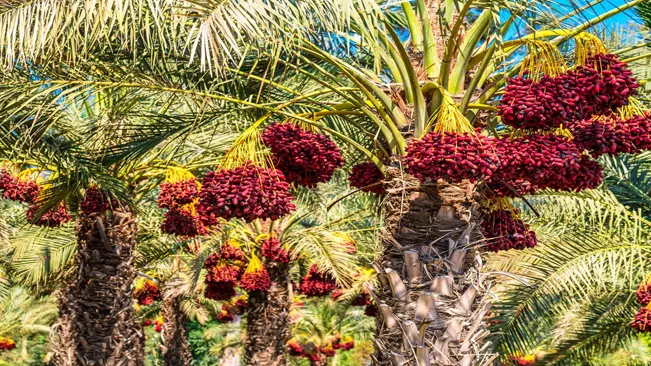
Benefits of Date Palm Tree
| Benefit | Description |
|---|---|
| Nutritious Fruit | Dates are rich in essential nutrients such as potassium, magnesium, vitamin B6, and antioxidants. |
| Sustainable Food Source | Date palms require minimal water and are highly efficient at converting sunlight into energy. |
| Economic Importance | Date cultivation provides employment opportunities and contributes significantly to local economies. |
| Soil Stabilization | The extensive root system of date palms helps prevent soil erosion and stabilizes sandy soils. |
| Carbon Sequestration | Date palms absorb carbon dioxide from the atmosphere, helping mitigate climate change. |
| Shade and Habitat | Date palm groves provide shelter for various species, contributing to biodiversity conservation. |
| Cultural Significance | Date palms hold cultural and religious significance in many societies and are symbols of hospitality. |
| Versatile Uses | Date palms offer various products including leaves for weaving and sap for making traditional sweets. |
| Health Benefits | Dates aid digestion, boost energy levels, and promote heart health, offering numerous health benefits. |
| Landscaping and Aesthetic | Date palms enhance the beauty of landscapes and urban areas, valued for their elegant appearance. |
List on How To Grow Date Palm Tree
- Selecting the Right Variety
- Germinating Date Palm Seeds
- Transplanting Seedlings
- Care and Maintenance
- Pollination and Fruit Development
- Harvesting Dates
Selecting the Right Variety
Before diving into cultivation, it’s crucial to choose the right variety of date palm tree. Some popular varieties include Medjool, Deglet Noor, Zahidi, and Barhi, each with unique characteristics in terms of taste, size, and growth habit. Consider factors such as climate suitability, desired fruit characteristics, and available space when selecting your variety.
Medjool
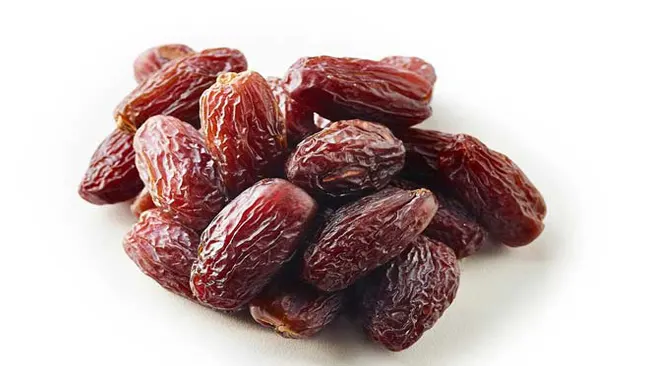
- Known as the “King of Dates,” Medjool dates are prized for their large size, rich flavor, and soft, chewy texture. They are often referred to as the most luxurious and gourmet variety of dates. Medjool palms are vigorous growers and can produce high yields of fruit.
Deglet Noor
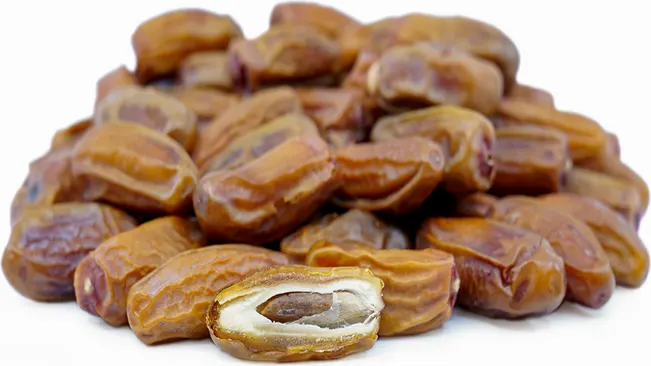
- Deglet Noor dates, also known as “Date of Light,” are characterized by their translucent appearance and slightly drier texture compared to Medjool dates. They have a sweet, nutty flavor and are commonly used in cooking and baking. Deglet Noor palms are well-suited to arid climates and are known for their resilience.
Zahidi

- Zahidi dates are smaller and drier than Medjool and Deglet Noor varieties, with a firm texture and a sweet, caramel-like flavor. They are often used for snacking and canning. Zahidi palms are relatively easy to grow and are known for their high productivity.
Barhi
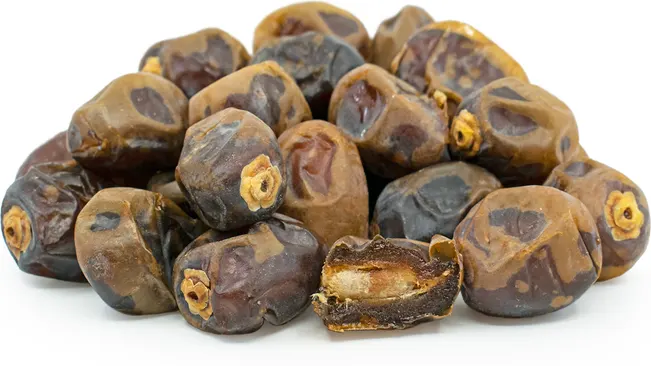
- Barhi dates are distinct for their amber-colored skin and soft, creamy texture. They have a rich, caramel-like flavor and are often eaten fresh or used in desserts. Barhi palms are less common than other varieties but are valued for their ornamental appearance and delicious fruit.
Germinating Date Palm Seeds
Date palms are typically propagated from seeds, which are commonly found within the sweet fruit. Follow these steps to germinate date palm seeds successfully:
Seed Extraction
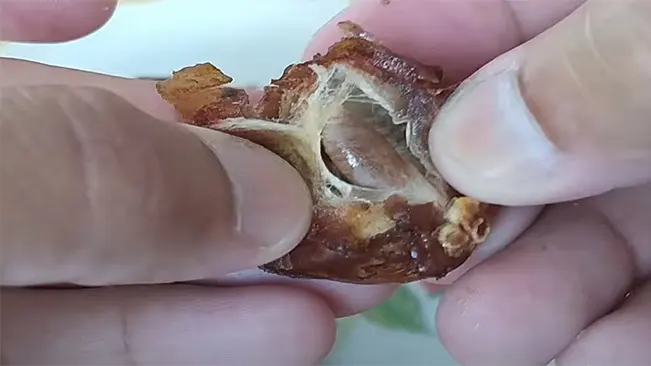
- Begin by extracting seeds from fresh, ripe dates. Ensure the seeds are fully matured and intact. Rinse them thoroughly under running water to remove any remaining pulp or residue.
Seed Preparation
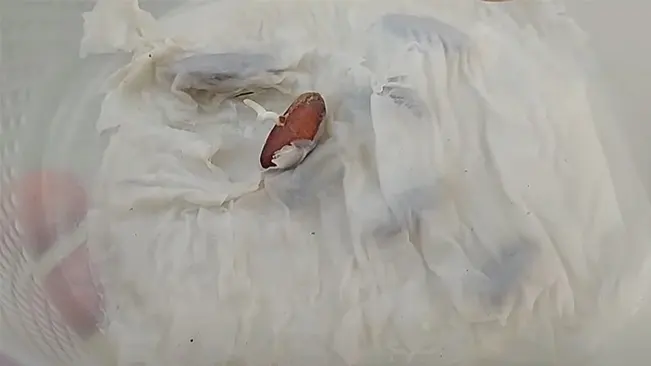
- Once cleaned, soak the seeds in water for a period of 24 to 48 hours. This soaking process softens the tough outer seed coat, making it easier for the seed to absorb moisture and initiate germination.
Planting
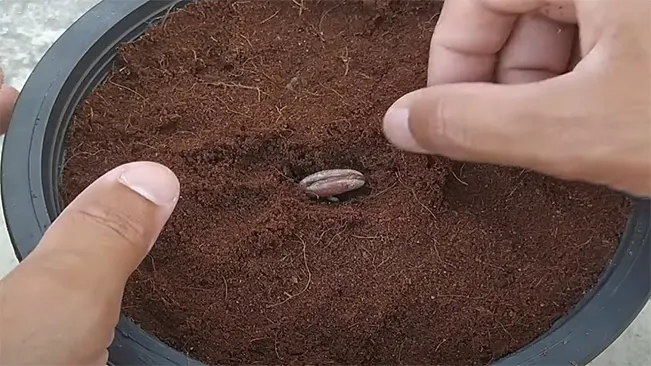
- After soaking, plant the seeds in a well-draining potting mix. Make sure the potting mix is loose and aerated to allow for proper root development. Bury the seeds approximately 1 inch deep in the soil.
Maintaining Moisture
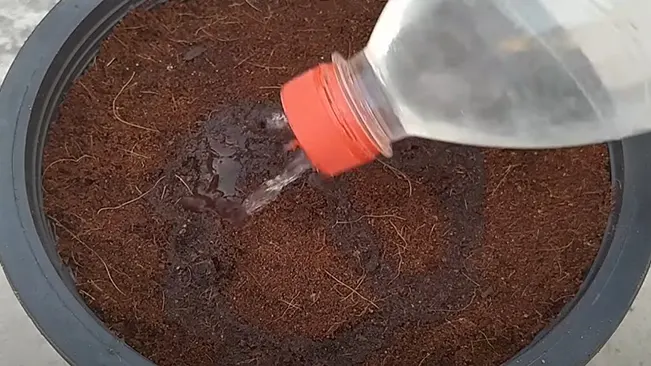
- It’s essential to keep the soil consistently moist during the germination process. However, avoid overwatering, as this can lead to rotting. Water the seeds gently and ensure excess water can drain away freely.
Warmth and Light

- Place the pot in a warm, sunny location where the seeds can receive ample sunlight. Alternatively, you can provide bottom heat using a heating mat set to a low temperature. Warmth is crucial for stimulating germination and promoting healthy seedling growth.
Patience

- Germination of date palm seeds is a gradual process that requires patience. It can take anywhere from 1 to 6 months for the seeds to sprout and begin growing. During this time, continue to provide consistent care by monitoring moisture levels and ensuring adequate warmth and light.
Transplanting Seedlings
Once the seedlings have developed several sets of true leaves, they can be transplanted into larger containers or directly into the ground. Follow these guidelines for successful transplanting:
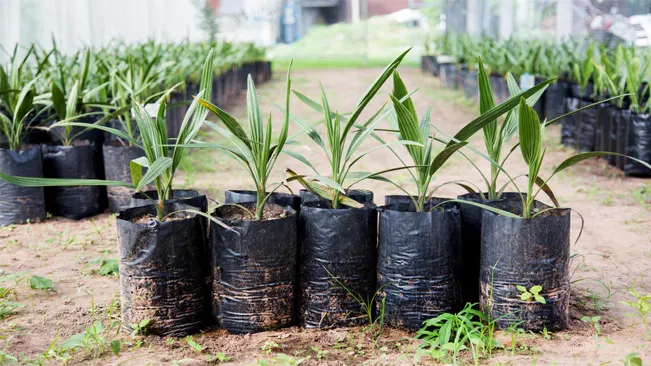
Container Selection
- It’s essential to choose the right container for transplanting date palm seedlings. Opt for containers with adequate drainage holes to prevent waterlogging, which can lead to root rot. Additionally, ensure the container provides enough space for the roots to grow freely. Select a high-quality potting mix that is well-draining and rich in organic matter to provide the necessary nutrients for healthy growth.
Transplanting Procedure
- When transplanting date palm seedlings, handle them with care to avoid damaging the delicate roots. Gently remove the seedling from its original container, taking care not to disturb the root ball excessively. Plant the seedling at the same depth it was previously growing, ensuring that the soil level matches the level of the stem. After planting, water the seedling thoroughly to help settle the soil around the roots and provide hydration to the plant.
Outdoor Planting
- If you’re transplanting date palm seedlings directly into the ground, choose a suitable location that receives ample sunlight and has well-draining soil. Date palms thrive in sunny environments, so select a spot with full sun exposure. Ensure the soil is well-draining to prevent waterlogging, which can lead to root rot. Space the date palm seedlings at least 15 to 20 feet apart to allow for their mature size, as date palms can grow quite large. Proper spacing ensures adequate airflow and prevents overcrowding as the trees mature.
Care and Maintenance
Proper care and maintenance are essential for the healthy growth of date palm trees. Here are some key considerations:
Watering
Adequate watering is crucial for the health of date palm trees, especially during the establishment phase and hot, dry periods. Here’s how to ensure proper watering:

- Frequency: Water young date palms regularly, ensuring the soil remains consistently moist but not waterlogged. As the tree matures, it becomes more drought-tolerant, but regular watering is still necessary, especially during periods of heat or drought.
- Method: Deep watering is preferred to encourage deep root growth. Apply water slowly and deeply to saturate the root zone.
- Soil Drainage: Ensure the soil is well-draining to prevent waterlogging, which can lead to root rot. If planting in heavy clay soils, consider amending the soil with organic matter to improve drainage.
Fertilization
Date palms benefit from regular fertilization to replenish nutrients and promote healthy growth and fruit production. Here’s how to fertilize date palm trees effectively:
- Type of Fertilizer: Use a balanced fertilizer formulated specifically for palm trees. Look for a fertilizer with a ratio of nitrogen (N), phosphorus (P), and potassium (K), such as 8-2-12 or 8-2-10.
- Application: Apply fertilizer evenly around the base of the tree, avoiding direct contact with the trunk. Follow the manufacturer’s recommendations for dosage and frequency, typically applied three to four times during the growing season.
- Timing: Apply fertilizer in early spring before new growth begins and again in late spring or early summer. Avoid fertilizing in late summer or fall, as this can stimulate new growth susceptible to frost damage.
Pruning
Regular pruning helps maintain the health, aesthetics, and safety of date palm trees. Here are some pruning tips:
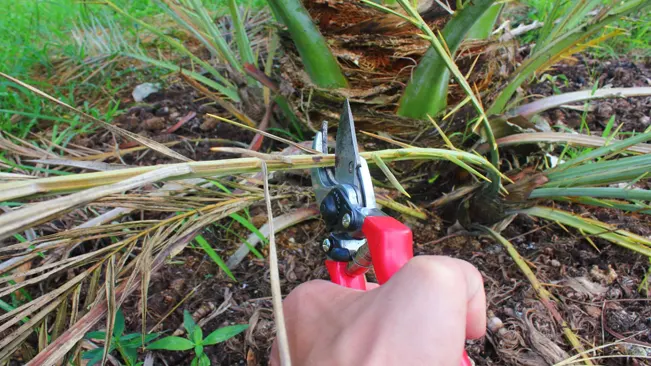
- Dead Frond Removal: Remove dead, yellowing, or damaged fronds promptly to prevent disease spread and pest infestations. Use sanitized pruning tools to make clean cuts, avoiding injury to the trunk.
- Sucker Removal: Remove suckers or offshoots that emerge from the base of the tree to prevent competition for nutrients and maintain a single-trunked appearance.
- Crown Cleaning: Periodically thin out the canopy to improve air circulation and reduce the risk of fungal diseases. Avoid excessive pruning of green fronds, as this can stress the tree.
Protection from Frost: Date palms are susceptible to frost damage, especially when young or during extreme cold spells. Here’s how to protect date palm trees from frost:
- Covering: Use frost cloth or blankets to cover young or vulnerable trees during cold weather events. Secure the coverings loosely to prevent damage to the fronds.
- Mulching: Apply a layer of organic mulch around the base of the tree to insulate the soil and roots from temperature fluctuations.
- Heat Source: Consider using heat lamps or strings of Christmas lights wrapped around the trunk to provide additional warmth during frosty nights.
Pollination and Fruit Development
Date palms are dioecious, meaning individual trees are either male or female. To produce fruit, female date palms require pollination by male trees. Follow these steps to facilitate pollination and fruit development:
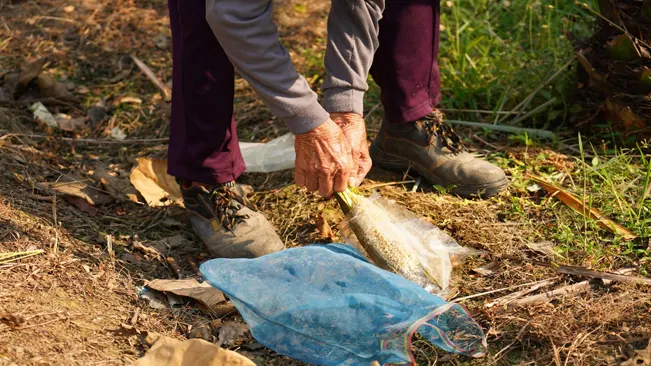
Pollination Process
- Date palms rely on wind or insects for pollination. Male date palm trees produce pollen-containing flowers called inflorescences, while female trees bear clusters of flowers that develop into fruit.
- Male flowers release pollen grains into the air, which are carried by the wind to female flowers. However, in commercial orchards, hand pollination is often practiced to ensure higher fruit yields and quality.
Identifying Male and Female Trees
- To facilitate pollination, it’s essential to identify male and female trees accurately. Female trees can be recognized by the presence of clusters of small flowers with ovary structures at the base, which will develop into fruits.
- Male trees typically produce larger, more elongated flower clusters without ovary structures. They mainly bear pollen-containing flowers.
Hand Pollination
- Hand pollination involves manually transferring pollen from male flowers to the stigma of female flowers. This can be done using a small brush or cotton swab.
- Collect pollen from male flowers by gently tapping the flower clusters, causing pollen grains to fall onto a collection surface. Then, transfer the collected pollen to the stigma of female flowers.
Fruit Development
- Following successful pollination, the fertilized flowers on female trees develop into small, green fruits known as “khalal.” These fruits gradually grow and mature over several months.
- As the fruits ripen, they undergo color changes, turning from green to yellow, and finally to brown or reddish-brown, depending on the date variety.
- Harvesting typically occurs when the dates reach their desired color and size. However, the exact timing of harvest may vary depending on the intended use of the dates (e.g., fresh consumption or processing).
Harvesting Dates
Harvesting dates is a rewarding culmination of your efforts in cultivating date palm trees. Follow these guidelines for a successful harvest:
Timing
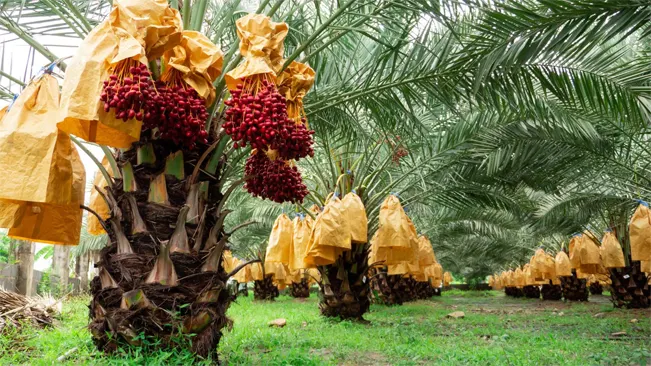
- Harvest dates when they are fully ripe but still firm. The exact timing varies depending on the variety and growing conditions but generally occurs in late summer to early fall. You can determine ripeness by observing the color of the dates – they should have a rich, deep color and a slightly wrinkled appearance. Additionally, ripe dates will have a sweet aroma.
Harvesting Method

- Use a long-handled pruning tool or a sharp knife to cut the entire fruit bunch from the palm. It’s essential to cut the bunch carefully to avoid damaging the palm or nearby fronds. Approach the bunch from the side opposite to the direction of the wind to prevent it from falling onto the tree, potentially causing damage.
Post-Harvest Handling

- Once the fruit bunch is removed from the palm, it’s time to prepare the dates for storage or consumption. Start by removing any remaining stem attached to the fruit bunch. This can be done by gently twisting or cutting it off. Then, gently wash the dates to remove any dirt or debris that may have accumulated on the surface. It’s crucial to handle the dates carefully to avoid bruising or damaging them.
Drying and Storage
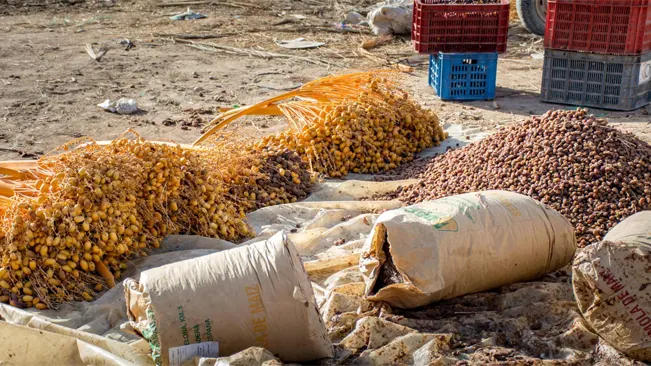
- After washing, allow the dates to air dry thoroughly. You can spread them out in a single layer on a clean surface or use a mesh drying rack to promote airflow. Once dry, store the dates in a cool, dry place away from direct sunlight. Properly stored dates can last for several months, retaining their flavor and quality.
Enjoying Your Harvest
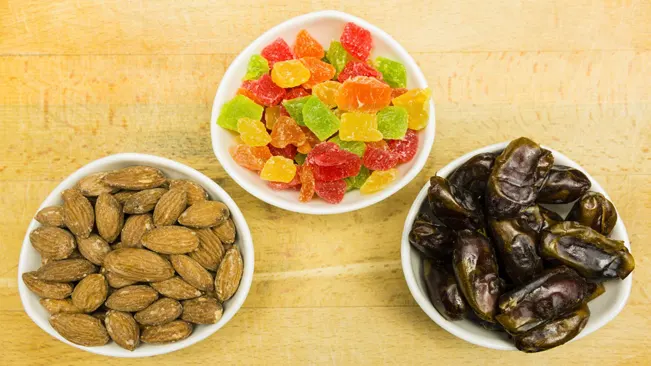
- Once your dates are harvested and properly stored, you can enjoy them in various ways. Dates can be eaten fresh as a nutritious snack, added to salads, baked goods, or used to make delicious desserts. They can also be dried further for a longer shelf life or processed into date syrup, paste, or other date-based products.
Related Post:
- How to Plant Water Spinach Seeds: Thrive in Your Garden
- How to Plant Durian: A Step-by-Step Guide to Cultivating the King of Fruits
- How to Grow Breadfruit: Essential Tips for a Thriving Tree
- How to Grow Jackfruit: A Beginner’s Guide
- How to Grow Ground Cherry: Simple Steps for Lush Growth
- How to Grow Spaghetti Squash: Your Thriving Garden Guide 2024
- How to Grow Runner Beans: A Comprehensive Guide for Bountiful Harvests
- How to Grow Jicama: Your Easy Guide to Cultivating the Mexican Yam Bean
- How to Grow Cinnamon Basil: A Beginner’s Guide to Aromatic Gardening
Conclusion
Growing date palm trees from seed to harvest requires patience, dedication, and proper care. By following the steps outlined in this guide, you can cultivate thriving date palms that provide an abundant harvest of delicious fruits. Whether you’re aiming for a bountiful backyard oasis or contributing to sustainable agriculture, the journey of growing date palms is both fulfilling and enriching. Embrace the timeless tradition of date cultivation and enjoy the sweet rewards for years to come.
FAQs (Frequently Asked Questions)
- What are the optimal growing conditions for date palm trees?
- Date palms thrive in warm, arid climates with plenty of sunlight. They prefer well-drained soil and are tolerant of salty soils.
- Date palms thrive in warm, arid climates with plenty of sunlight. They prefer well-drained soil and are tolerant of salty soils.
- How do I propagate date palm trees?
- Date palms are commonly propagated from seeds, offshoots (suckers), or tissue culture. Seeds should be soaked in water for a few days before planting.
- Date palms are commonly propagated from seeds, offshoots (suckers), or tissue culture. Seeds should be soaked in water for a few days before planting.
- How long does it take for a date palm tree to bear fruit?
- Date palms typically start producing fruit within 4 to 8 years after planting, although it may take up to 12 years in some cases.
- Date palms typically start producing fruit within 4 to 8 years after planting, although it may take up to 12 years in some cases.
- How often should I water my date palm tree?
- Date palms require regular watering, especially during the growing season. However, they are drought-tolerant and should be allowed to dry out between waterings to prevent root rot.
- Date palms require regular watering, especially during the growing season. However, they are drought-tolerant and should be allowed to dry out between waterings to prevent root rot.
- Do date palm trees require fertilization?
- Yes, date palms benefit from regular fertilization, especially during the growing season. Use a balanced fertilizer formulated for palms, and follow the manufacturer’s instructions.
- Yes, date palms benefit from regular fertilization, especially during the growing season. Use a balanced fertilizer formulated for palms, and follow the manufacturer’s instructions.
- How do I protect my date palm tree from pests and diseases?
- Common pests of date palms include scale insects, spider mites, and palm weevils. Regular inspection and the application of appropriate pesticides or insecticides can help manage pest infestations. Diseases such as Fusarium wilt and Bayoud disease can be prevented by planting disease-resistant varieties and practicing good sanitation.
- Common pests of date palms include scale insects, spider mites, and palm weevils. Regular inspection and the application of appropriate pesticides or insecticides can help manage pest infestations. Diseases such as Fusarium wilt and Bayoud disease can be prevented by planting disease-resistant varieties and practicing good sanitation.
- When is the best time to prune a date palm tree?
- Pruning should be done in late winter or early spring before new growth begins. Remove dead or damaged fronds and any suckers that emerge from the base of the tree.
- Pruning should be done in late winter or early spring before new growth begins. Remove dead or damaged fronds and any suckers that emerge from the base of the tree.
- How tall do date palm trees grow?
- Date palm trees can reach heights of 50 to 80 feet (15 to 24 meters) or more, depending on the variety and growing conditions.
- Date palm trees can reach heights of 50 to 80 feet (15 to 24 meters) or more, depending on the variety and growing conditions.
- Can date palm trees be grown in containers or indoors?
- Yes, date palm trees can be grown in containers, but they require a large container and regular repotting as they grow. Indoors, they need bright sunlight and adequate humidity to thrive.
- Yes, date palm trees can be grown in containers, but they require a large container and regular repotting as they grow. Indoors, they need bright sunlight and adequate humidity to thrive.
- How do I harvest dates from my date palm tree?
- Dates are typically harvested when they reach their mature color and size, which varies depending on the variety. They can be harvested by hand or using specialized equipment such as a shaking machine. Dates should be handled carefully to avoid bruising and stored in a cool, dry place.

Kristine Moore
Forestry AuthorI'm Kristine Moore, a seasoned garden landscaping professional with over 30 years of experience. My extensive career has been dedicated to transforming outdoor spaces into stunning, sustainable landscapes. With a deep understanding of horticulture, design principles, and environmental stewardship, I have become a respected figure in the field, known for creating harmonious, visually appealing, and eco-friendly gardens. My commitment to excellence and continuous learning in landscaping trends and techniques has solidified my reputation as an expert in garden design and implementation.

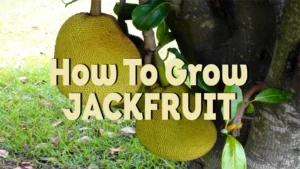
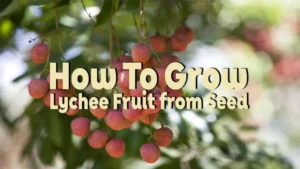
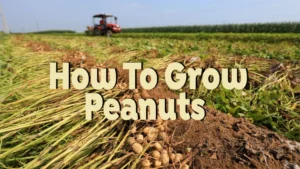









Leave your comment